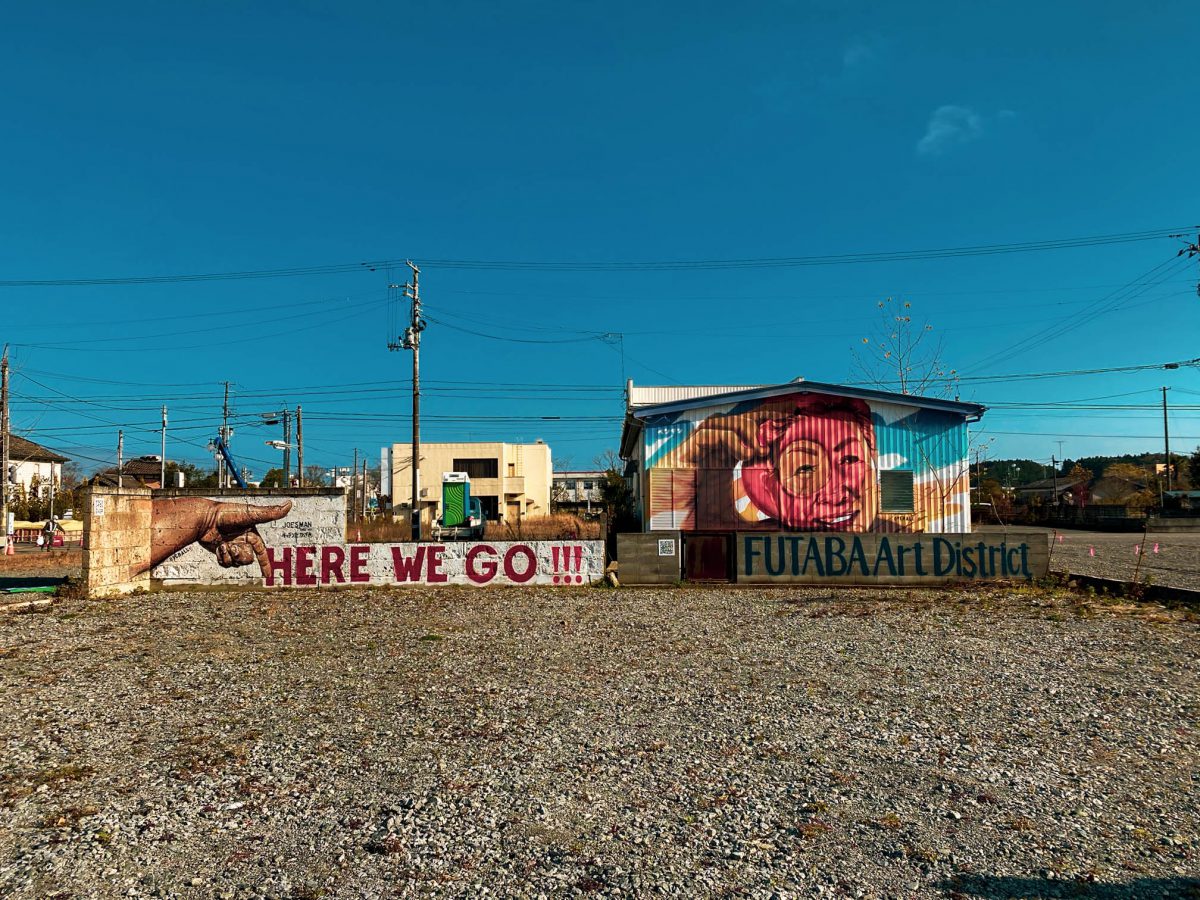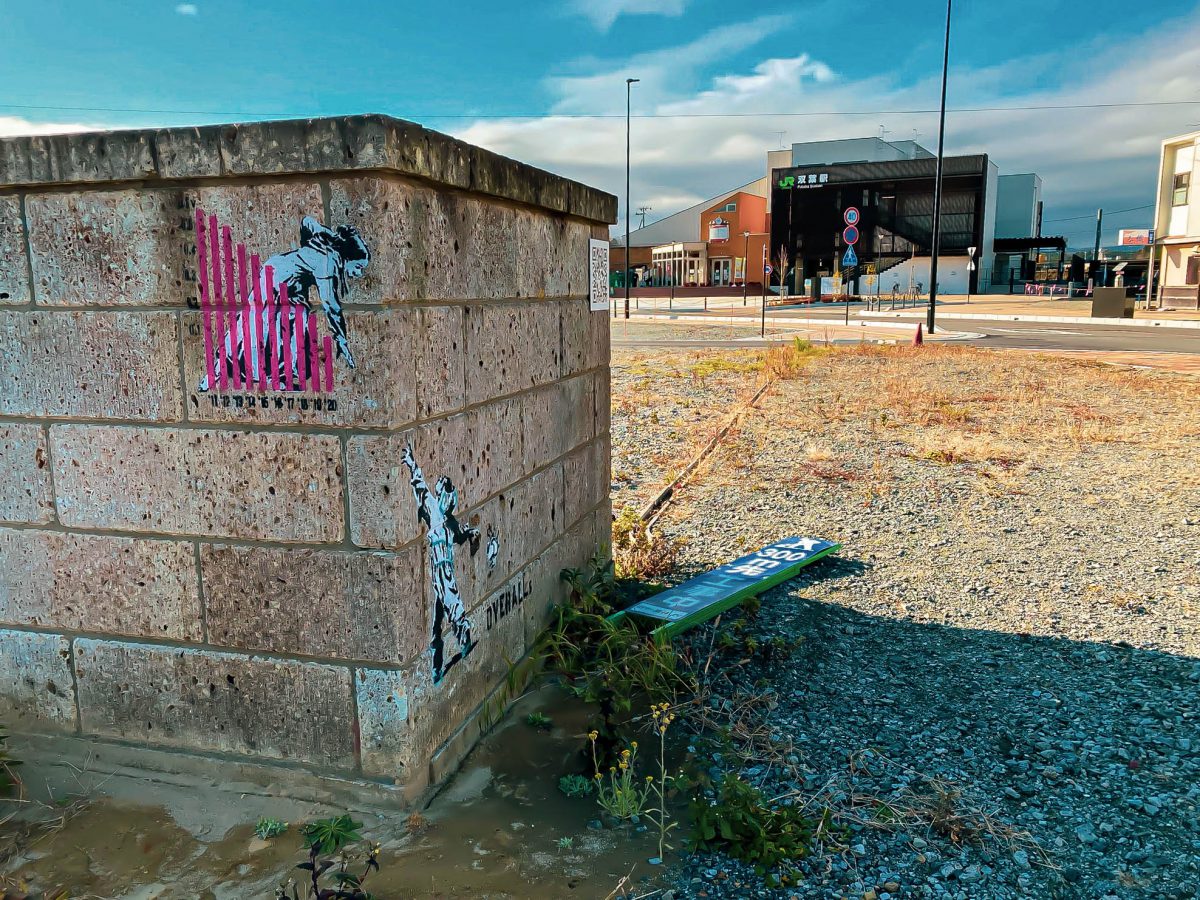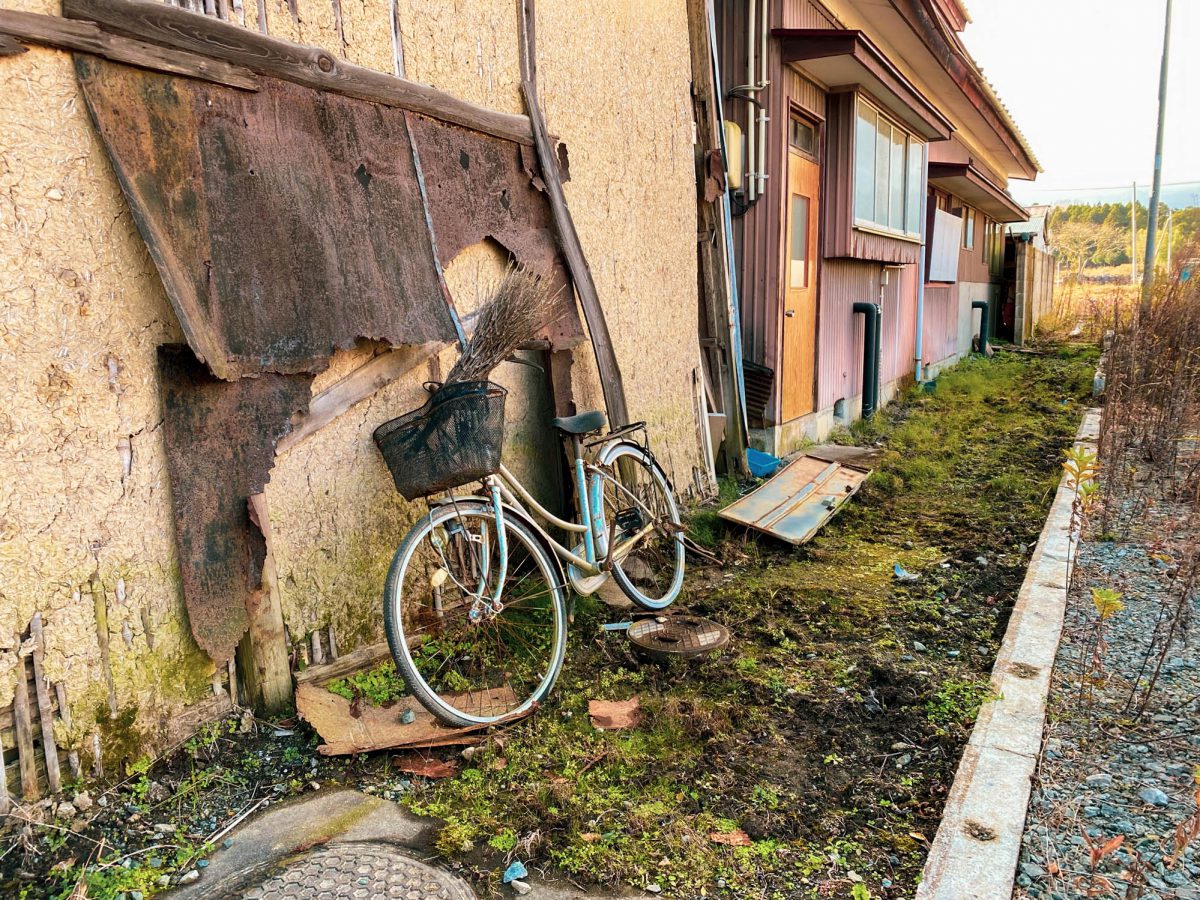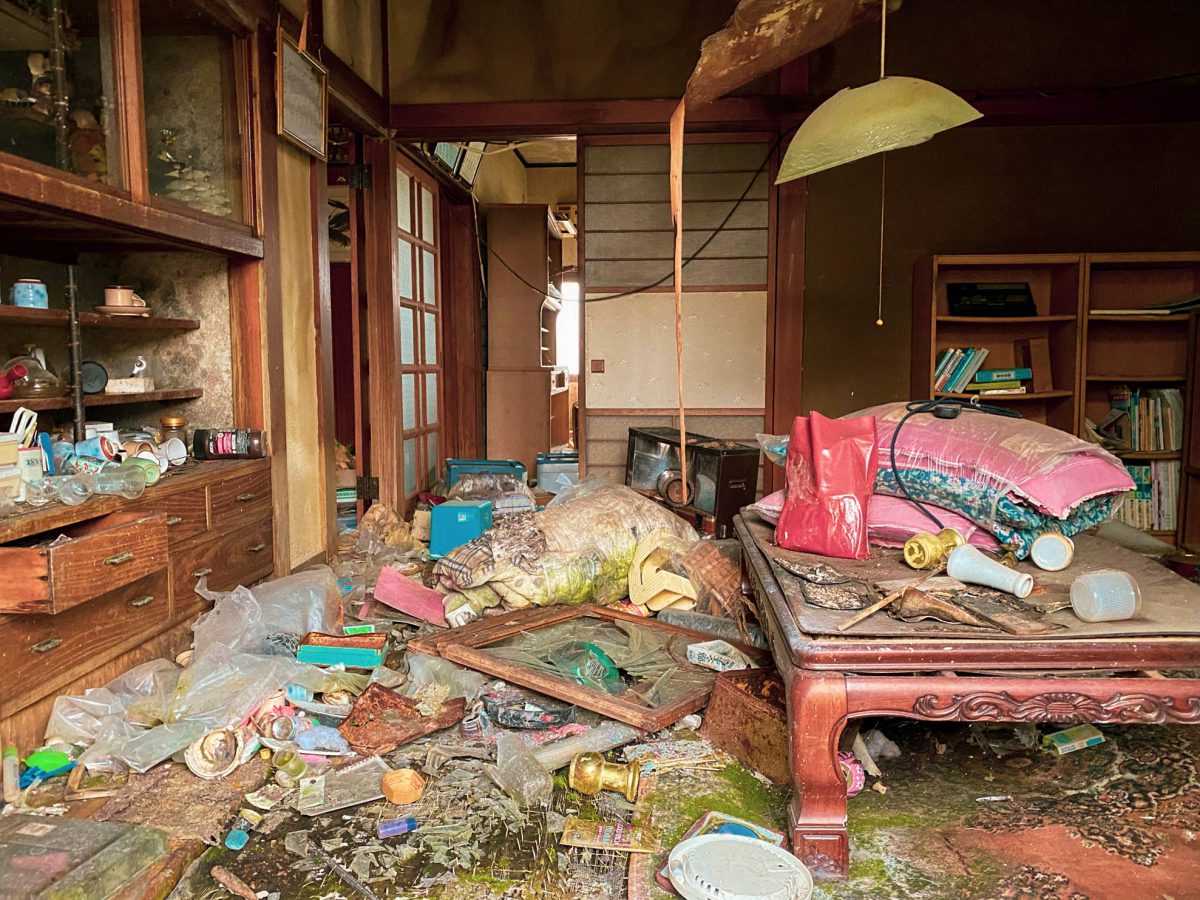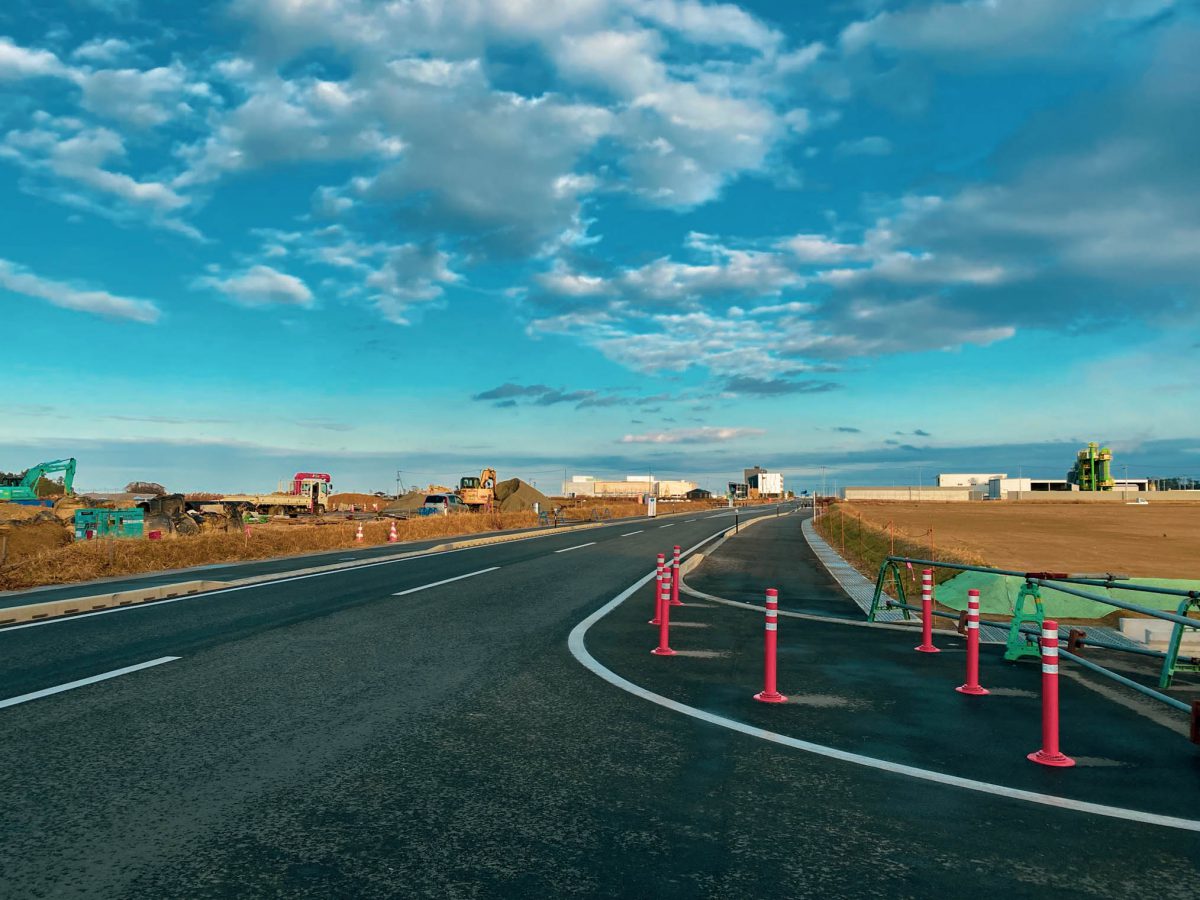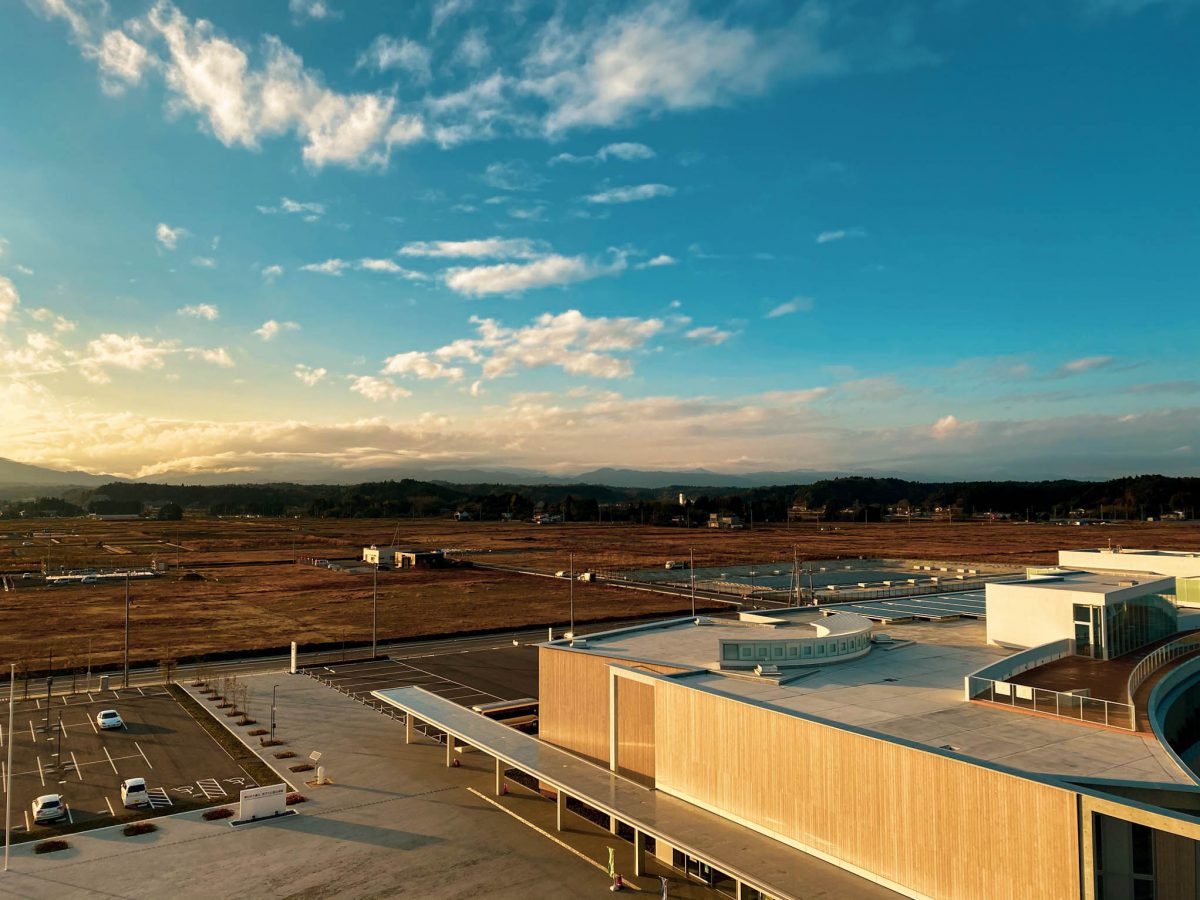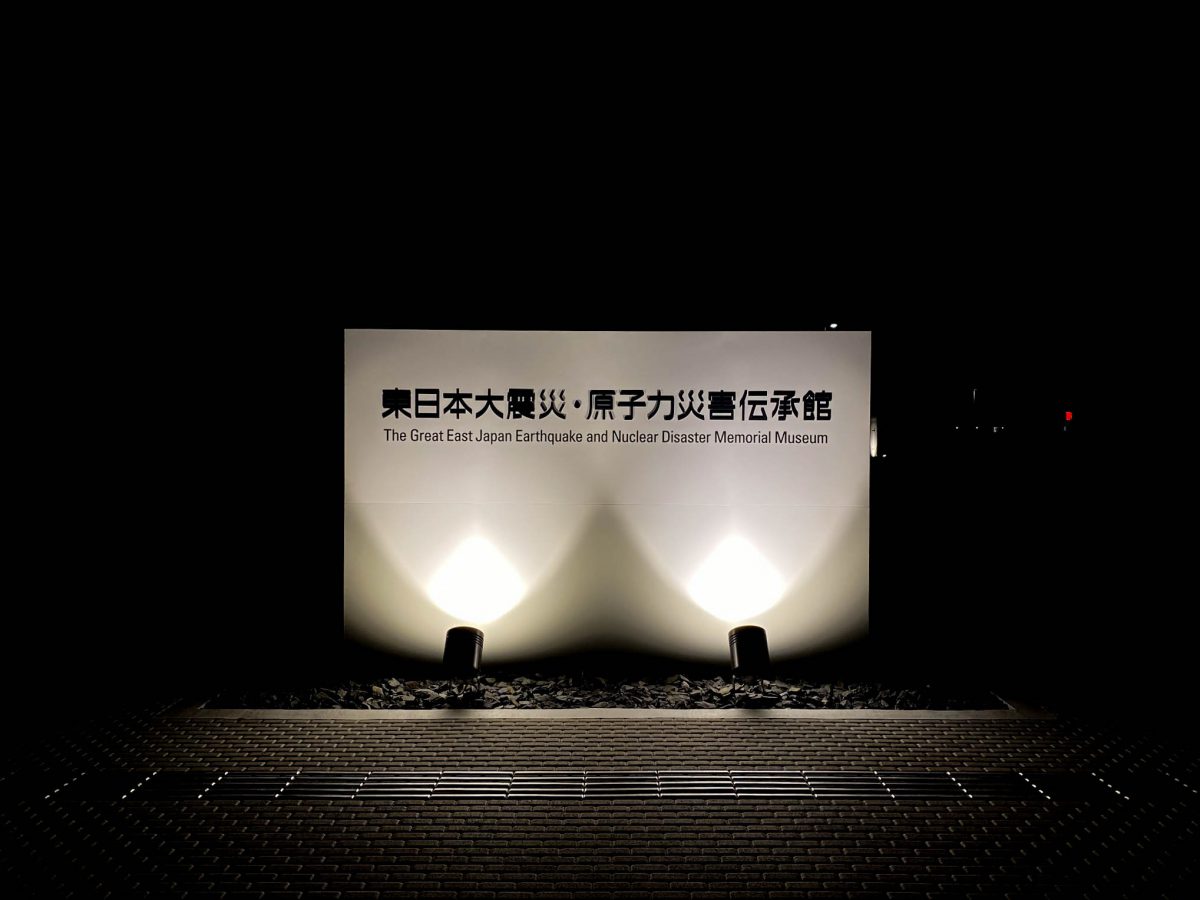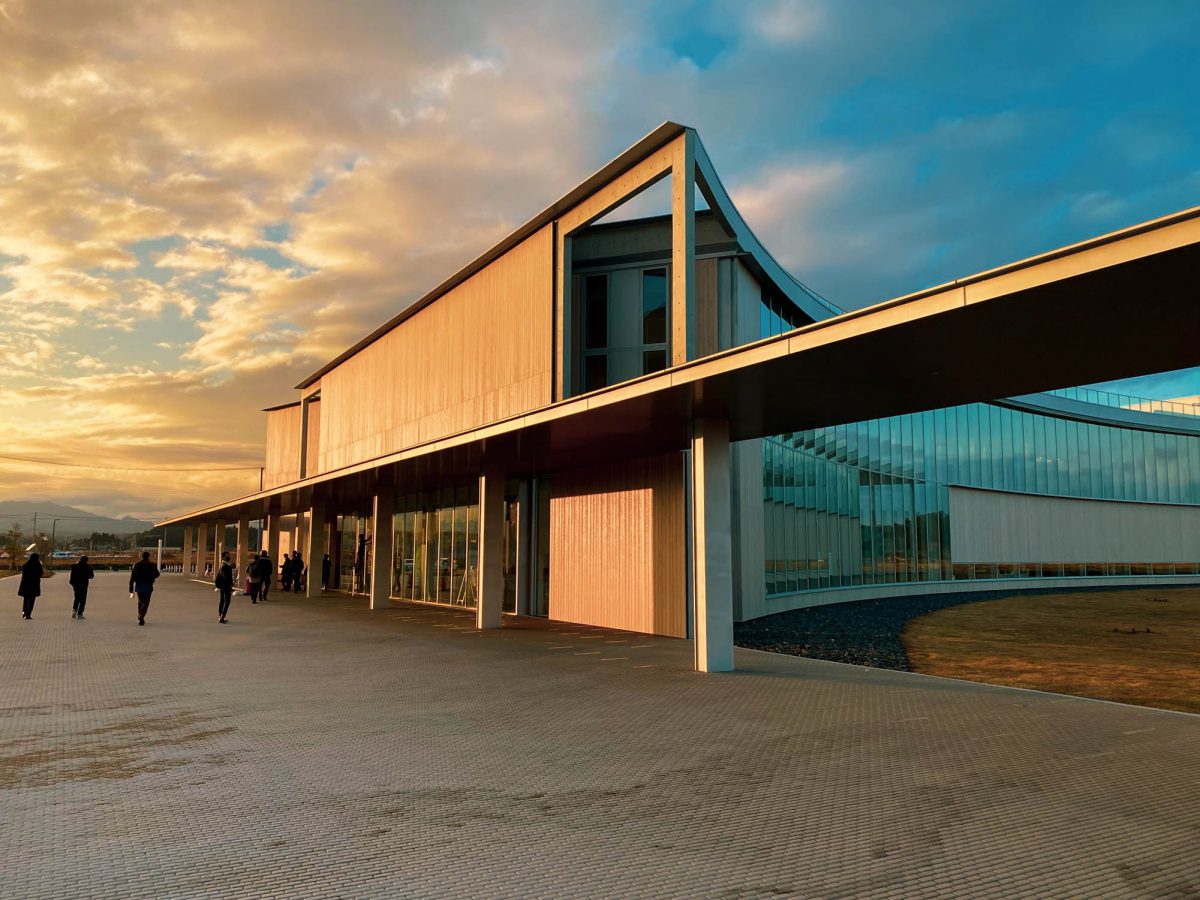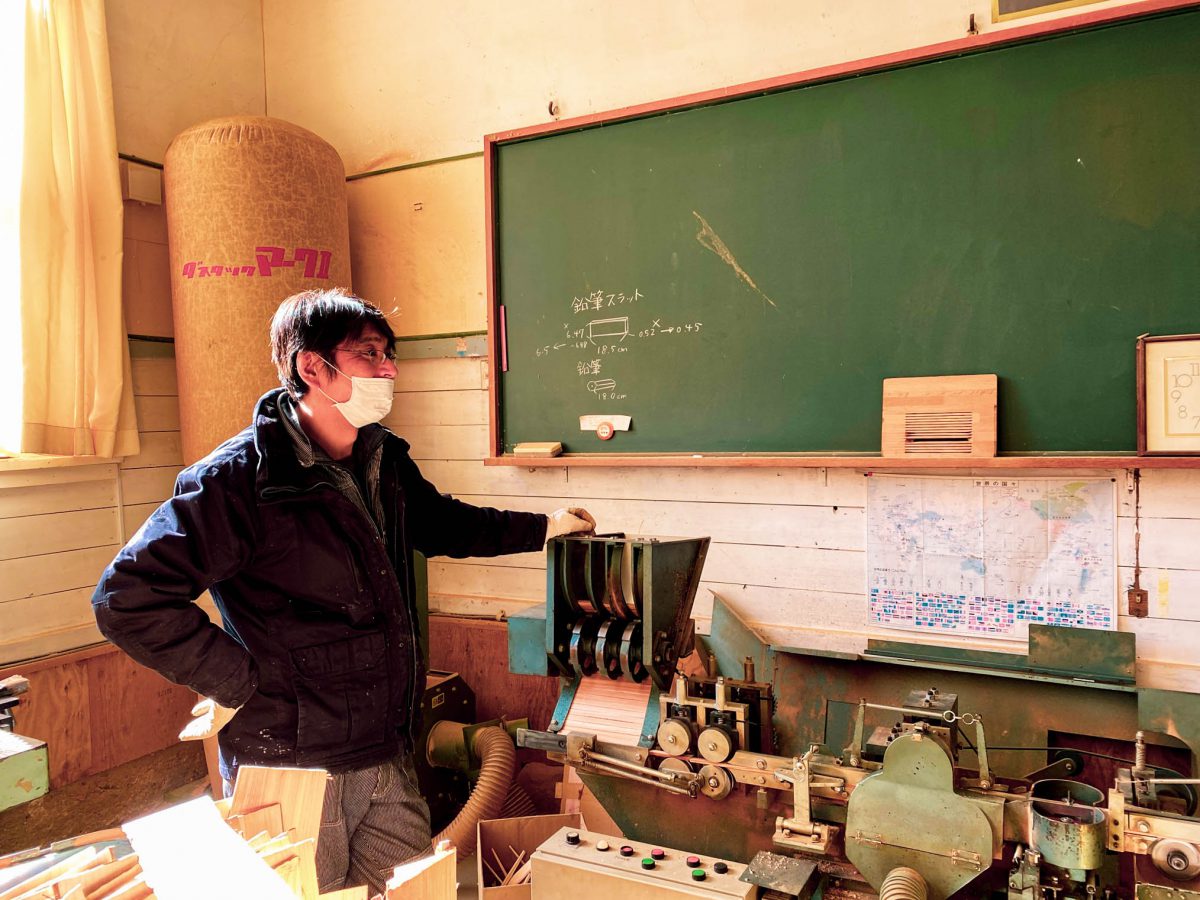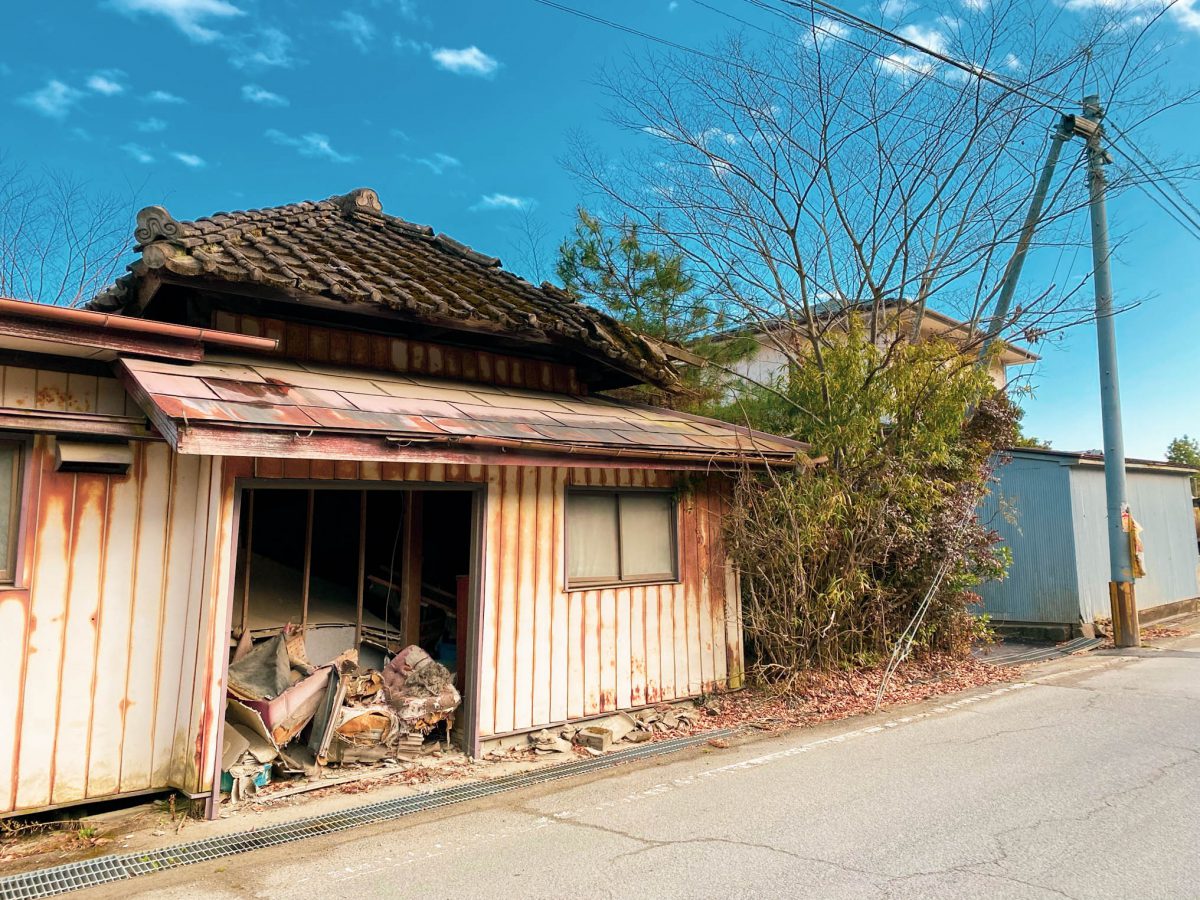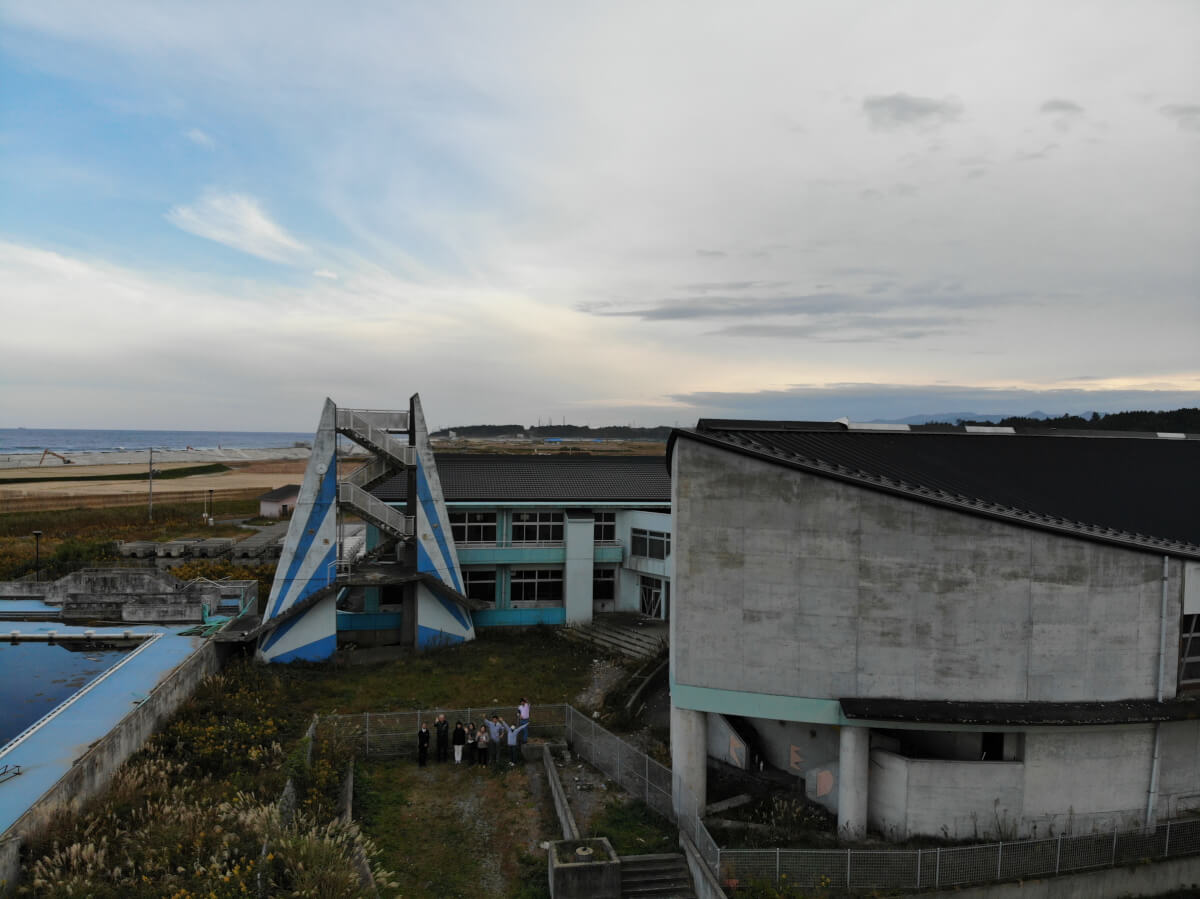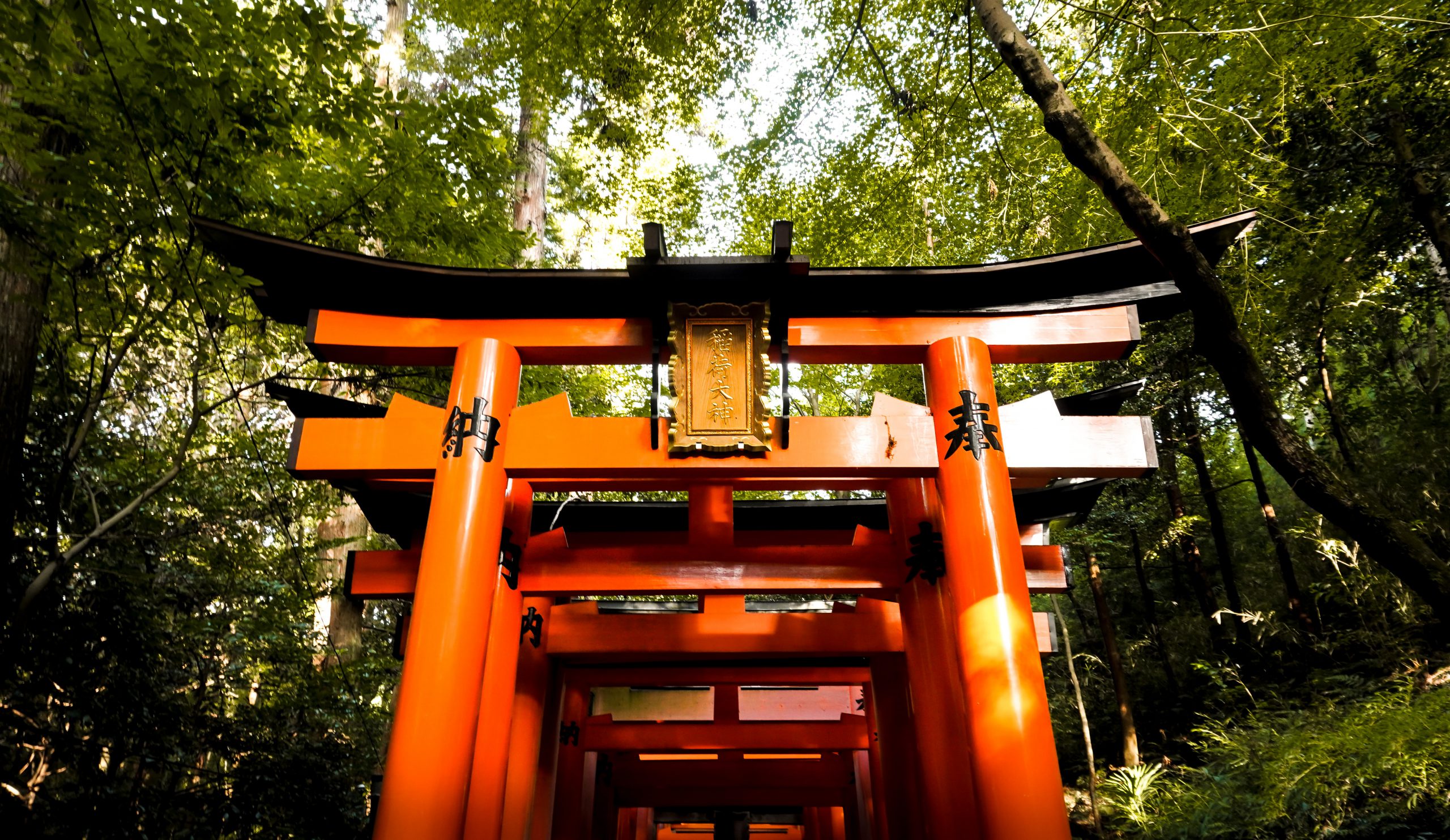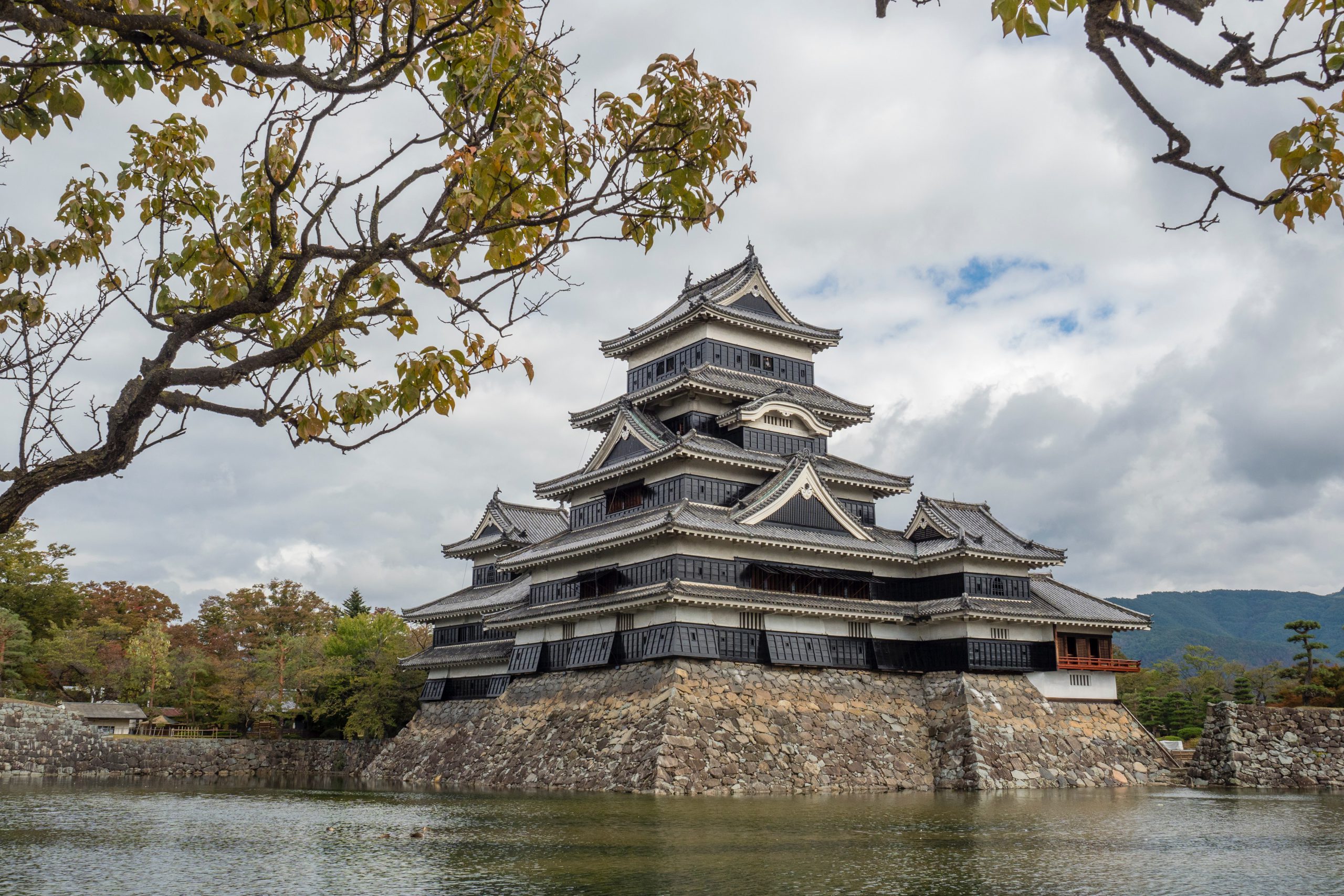Fukushima isn’t a place where many tourist go when travelling in Japan. After the infamous events of 2011, a powerful earthquake that triggered a tsunami, that in turn caused the nuclear accident, many think of the Fukushima as a dangerous place. Something that is not entirely true. In fact, Fukushima is the third largest prefecture of Japan, covering a vast area of almost 14,000km², and today only about 2.4% of the prefecture is inaccessible because of the disastrous events that took place on March 11, 2011.
Recently, I had the opportunity to visit parts of the Fukushima Disaster Area including Iwaki, Namie and Futaba. These towns were struck by the tsunami and badly affected by the explosion of the Fukushima Daiichi Power Plant and the radiation that was released by it. The tour, organised by Japan Wonder Travel, consisted of several elements and each told the story in different phases; first we had a walking tour through Futaba, a town located 4km away from the Daiichi Power Plant, followed by a visit to the Great East Japan Earthquake and Nuclear Disaster Memorial Museum that opened in September 2020. The next day we visited the workshop of Takahashi and a public housing facility in Iwaki, where we met a former Futaba resident. In this blog I will share my experience of visiting each place.
The Great East Japan Earthquake
On March 11, 2011 at 14:46 JST, Japan was rocked by an earthquake with a magnitude 9.0-9.1, the most powerful earthquake ever recorded in Japanese history. Even though the epicentre was located about 70 km off the coast of Oshika Peninsula in the Tohoku region, more than 500 km north of Tokyo, people in Tokyo felt the shocks. The earthquake triggered a powerful tsunami with waves that reached a height of 40.5 meters, a speed of 700 km/h and travelled up to 10 km inland. Due to an unlucky series of events, three reactors in the Fukushima Daiichi Nuclear Power Plant complex exploded and residents within a 20 km radius of the Fukushima Daiichi Nuclear Power Plant had to evacuate. At the time, not knowing the scale of the events, people left their houses and fled to nearby towns. Soon, it became clear that they wouldn’t be able to return home for a long period of time, even today many people are still unable to return.
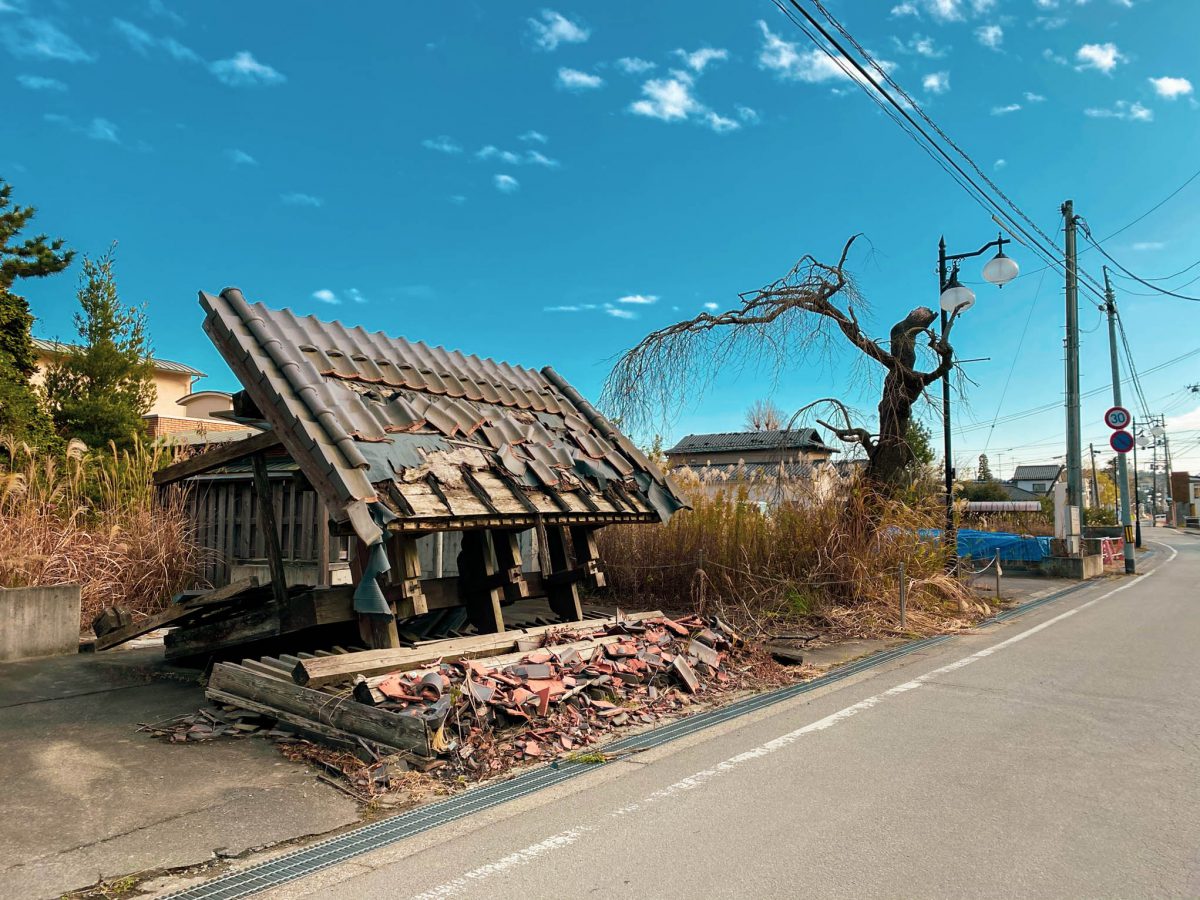
Fukushima Disaster Area Walking Tour
After a long drive from Tokyo (~3.5 hrs) and a delicious lunch, the local specialty chicken ramen, we started the first part of the programme: a walking tour through Futaba town. The evacuation order of Futaba was partially lifted only in March 2020, and the town shows an amazing contrast of newly constructed buildings, including the brand new JR station, and the houses and shops that remain untouched since March 11, 2011.
One of our guides, Tatsuhiro Yamane-san, is a local who lived in Tokyo at the time of the Tohoku Earthquake, but moved to Iwaki town to help the reconstruction of the area. He’s very set on moving back to Futaba town in the future together with his wife, who lived in Futaba at the time of the earthquake and had to leave her house and life behind.
The tour started at Futaba Station, where we received a short introduction on the town life of Futaba before moving to the streets that used to be full of live, but now were completely deserted. Walking passed the time capsule of inhabited houses and closed shops and the many vacant lots of demolished houses, made the experience very raw and real. While we were traveling back in time almost 10 years, Yamane-san explained the current situation to us and spoke about the former residents who were forced to rebuilt their lives elsewhere, without any outlook on when they would be able to return to the land they felt so strongly connected to. One of the most impressive parts of the tour was when we visited the house of Yamane-san’s wife, where we could see pictures of their dogs and all their personal belongings.
Actual seeing it as opposed to seeing pictures, in combination with the personal stories, made the experience very real. Every house, every building had a story, and left me and the other tour participants speechless. We all felt the untouched and raw situation, but also gained an understanding of the problem of how to restore the town and offer a brighter future. Fact is, even though houses are currently being constructed, many people do not want to return to Futaba, partly for the reason that they have started their new lives elsewhere.

Road towards Hope 
Rooftop view
Our tour ended fittingly at the Road towards Hope, where we could clearly see the steps of progress already taken. The infrastructure was reconstructed and new buildings were built. But the presence of large piles of the black bags containing contaminated soil, clearly reminded us of the fact there is still a long way to go. Standing on the rooftop of one of the buildings and enjoying an absolutely stunning panoramic view, during golden hour, and I felt sad and hopeful at the same time.
The Great East Japan Earthquake and Nuclear Disaster Memorial Museum
On September 20, the Fukushima prefectural government opened a new museum about events of March 11 in the town of Futaba. The Great East Japan Earthquake and Nuclear Disaster Memorial Museum aims to convey the impact of the unprecedented disaster to subsequent generations while educating both Japanese and overseas visitors about regional efforts to rebuild. The museum is divided into 5 different stages:
- The beginning of the compound disaster
- Immediate response to the nuclear accident
- Voices of Fukushima
- Long term impact of the nuclear disaster
- Striving for revitalization
Through animated videos, personal stories, maquettes and items such as equipment and documentation, we could gain a deeper understanding of the disaster event and the aftermath. The museum visit started with an interesting big data movie, displaying the timeline. Most of the exhibition is in Japanese, but (foreign) visitors receive a tablet, where they can select multiple languages, that will guide them through the exhibition. There is museum staff walking around to help you out where needed and I started talking to one of the staff members. He was living in Yokohama in 2011 but moved to Fukushima. He said that, at the time, he felt: ‘I am Japanese so I need to do something. I need to help Japanese people’, a statement that left quite the impression on me.
- The museum is opened from Wednesday to Monday from 9am – 5pm
- Entrance tickets are ¥600 per person (adult), including use of the tablet
- From Futaba station there are free shuttle buses available or you can walk for 30 min
After the museum visit, we made a short stop at the newly opened Michi-no-eki Namie, a roadside station where you can purchase some local products, before arriving at our hotel J-village. J-village is a huge facility with sport facilities including several sport fields, a gym and a public bath. The Olympic Torch Relay will start its journey on 25 March 2021 from the J-Village National Training Centre.
Visit Iwaki Takahashi manufactory
The programme of the second day was more focused on life after the events and revitalization of the area. We started with a visit to the workshop of Masayuki Takahashi-san. He started his sustainable business: manufacturing and sales of waribashi (disposable chopsticks) made from 100% Iwaki-grown cedar, cedar pillows, hinoki cypress pencils, and stuffed toys made with sawdust. Takahashi-san welcomed us to his small factory and showed us around. The facility is located in a former elementary school building that was opened in 1885. Due to a decreasing population, the school was closed in 2011. The school building suffered great damage from the earthquake and the aftershocks that continued for around one month after the disaster.
Takahashi-san carefully reconstructed the school building, keeping its original appearance and making it a suitable location for his factory at the same time. You can visit the facility free of charge and tours & activities including horseback riding are also offered. After seeing the whole process of the cut down trees being made into chopsticks, we branded our own pair of chopsticks and made our own hinoki cypress pencils. Takahashi-san has a zero waste policy, for example the sawdust is used by local farmers for the cow sheds. He is also focussing on building a community, for example by hosting lunches for locals regularly.
Iwaki Public Housing
The last element of our tour programme was a visit to a reconstruction public housing facility in Iwaki, which was completed in 2018.
Reconstruction public housing are public rental houses that can be rented at a low rent by victims who have lost their homes due to a disaster or had to evacuate from their hometown due to nuclear accident. After moving from one place to another several times (many people I met moved for more than 5 times in the last 10 years between temporary housing and relatives’ houses) people could finally settle and start building their new lives here.
This place offered two types of housing; some 80 apartments and another 80 houses. Currently about 130 households are living at the facility, including our guide Yamane-san and his wife. Yamane-san explained that about 70% of the households were Futaba residents, the 30% of other towns, but that the majority of the people was elderly. We met with the chairman of the residents association, Kobuku-san, who at the time of the earthquake, was in Tokyo for work, but his family was in Futaba. Unable to reach them, all direct communication lines had died, he took the first bus the next day to be reunited with his family.
Kobuku-san shared with us his dream of building a united community. As many residents feel still strongly connected to their former home, (social) interaction between the different community members is limited. Also, because many elderly residents, especially men who feel ashamed of losing their job, don’t go outside. He told a sad story about someone who has passed away recently, but when the medical personnel asked Kobuku-san about any relatives, he couldn’t tell them as he, nor anyone else, had any idea. Kobuku-san and Yamane-san are trying hard to build a stronger community, but it is a hard task. I admire people like Kobuku-san and Yamane-san for their strong will and energy and I can only hope that they will continue their efforts!
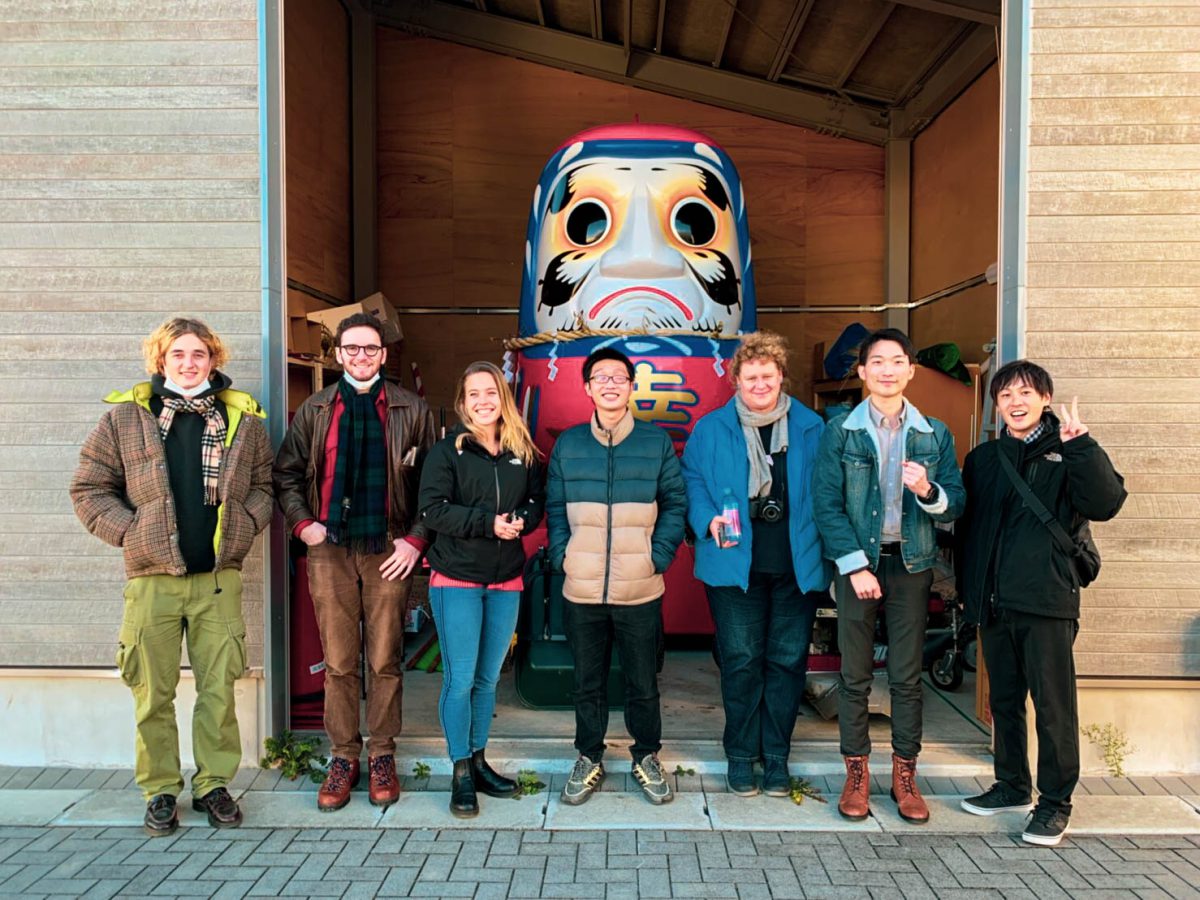
Iwaki Lalalew
Before heading back to Tokyo, we made one last stop at the shopping centre Lalalew in Iwaki city. Here they sell many local products, souvenirs and delicious food. When we arrived in the afternoon, we could still see the freshly catched fish of that day. From the waterfront we watched a beautiful sunset and with that our tour came to an end, with only the drive back to Tokyo left. It was a perfect ending to an amazing trip to the Fukushima disaster area.
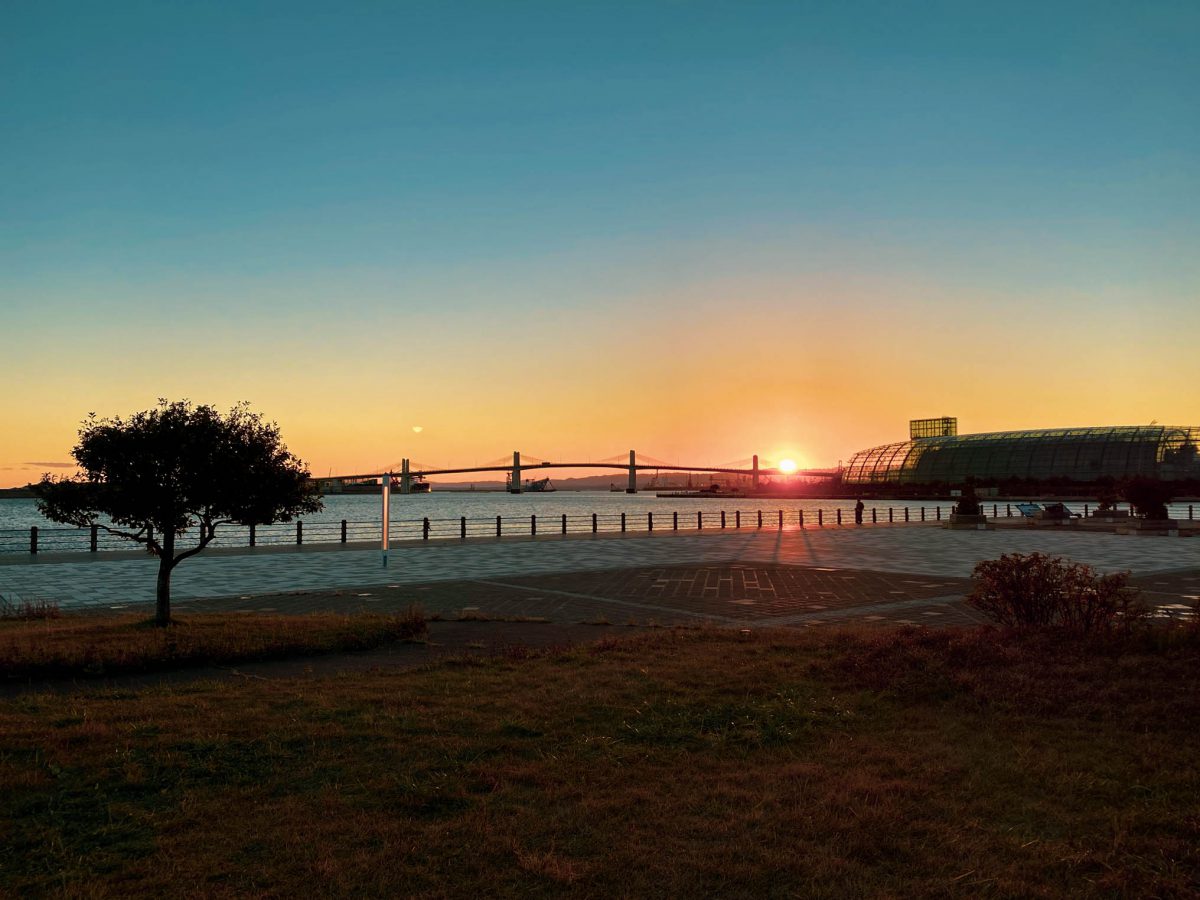
The disaster area in Fukushima isn’t a place that is receiving large groups of tourists, and many people avoid the place as they feel it is dangerous or there isn’t much to do/see. The reality, however, is quite the opposite; visiting the area and seeing the aftermath of the disastrous events of 2011 with my own eyes, was for me an eye opener and a truly enriching experience. Of course not all the areas are safe and cannot be accessed. But visiting some of the places where to evacuation order was lifted, hearing personal stories and seeing the well preserved houses that over time became one with nature, was for me an amazing experience. Another bonus was that the nature in the surrounding area of Fukushima was absolutely stunning and we saw beautiful autumn colored leaves.
Before joining the tour, Fukushima wasn’t one of the places that I had wanted to travel to, but I am so happy that I did. The story and the efforts of the locals to revive the area are truly impressive and I can only hope this future for this place is a bright one. Even though it has happened almost 10 years ago, everything feels very real and relevant. The locals we met were incredibly nice people with strong personalities and it is heartwarming to see some of the initiatives the locals to survive and revive the area. Meeting people such as the museum guide, Yamane-san and Kobuku-san was inspiring and their need to improve the situation is something that I will always remember.
It is heartbreaking to imagine what the people that were living in the affected areas, had to go through, their lives being ripped away right under their nose without any future in mind. Many have moved away to different towns, some to completely different areas in Japan. But you can sense the hope and determination everywhere. The area deserves a bright future, and, to my opinion, tourist, both Japanese and internationals, can play an important role here. By visiting the area, investing in the local economy and sharing their experiences with family and friends, tourists can contribute to the revival of Fukushima. I really recommend visiting the area, visiting the museum and investing a few yen in a local guide, it will be 100% worth your time and money!
Links to places / experiences in Fukushima disaster area
- Fukushima walking tour by Yamane-san
- Fukushima cycling your by Yamane-san
- The Great East Japan Earthquake and Nuclear Disaster Memorial Museum
- Iwaki Takahashi – disposable chopstick factory
- J-Village Hotel National Training Centre
- Lalalew shopping centre
Japan Wonder Travel is frequently organising trips from Tokyo to Fukushima where we visit different areas that were affected by the nuclear disaster that followed after the Tohoku Earthquake, while explaining the past, present, and future of Fukushima more deeply. Read more about our tours on our Fukushima page:
Articles you may also like
All of our tours are organised according the COVID-19 safety guidelines of the Japanese government. The situation is carefully monitored and the schedule will be changed wherever needed to assure the safety.

